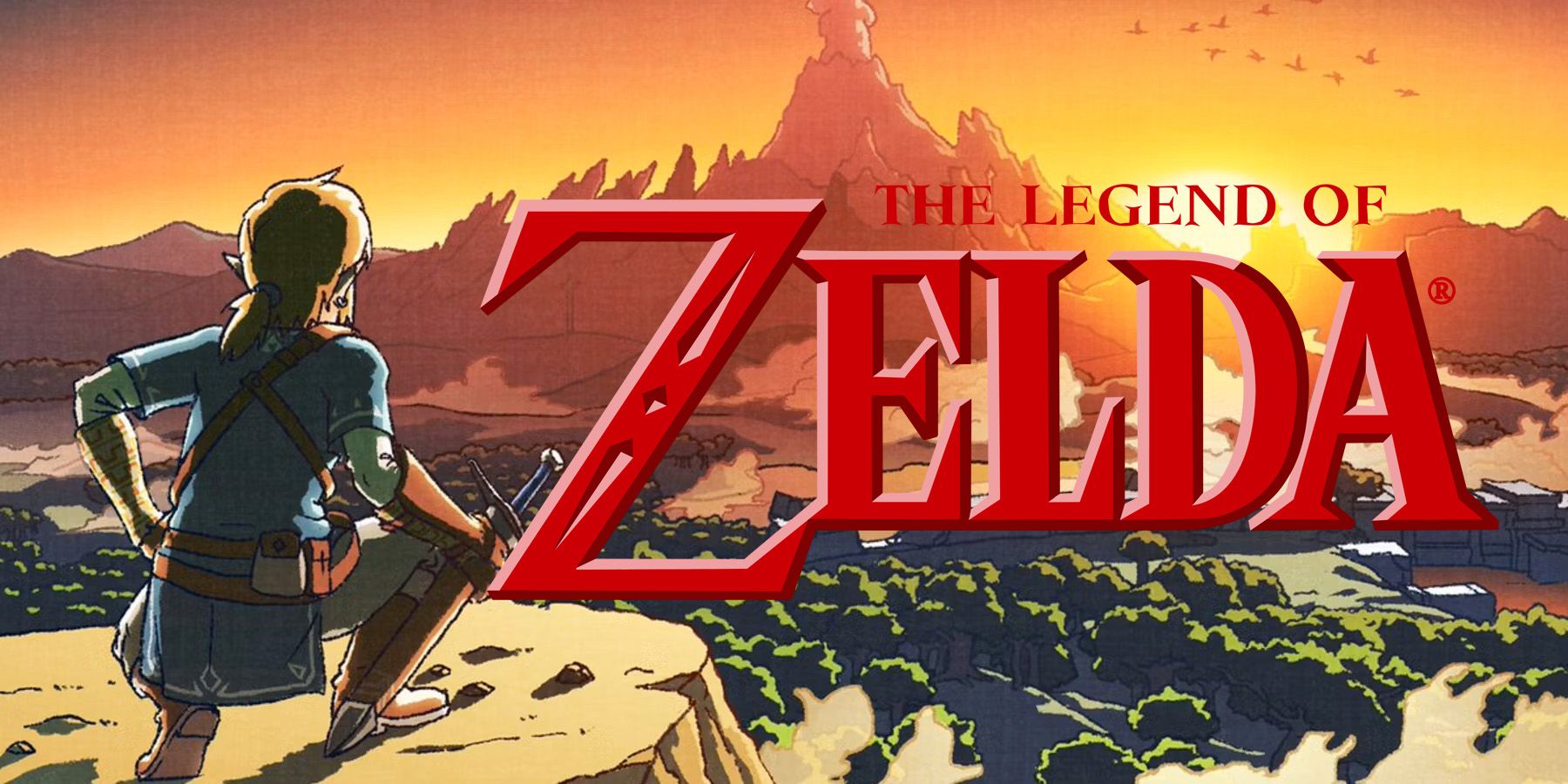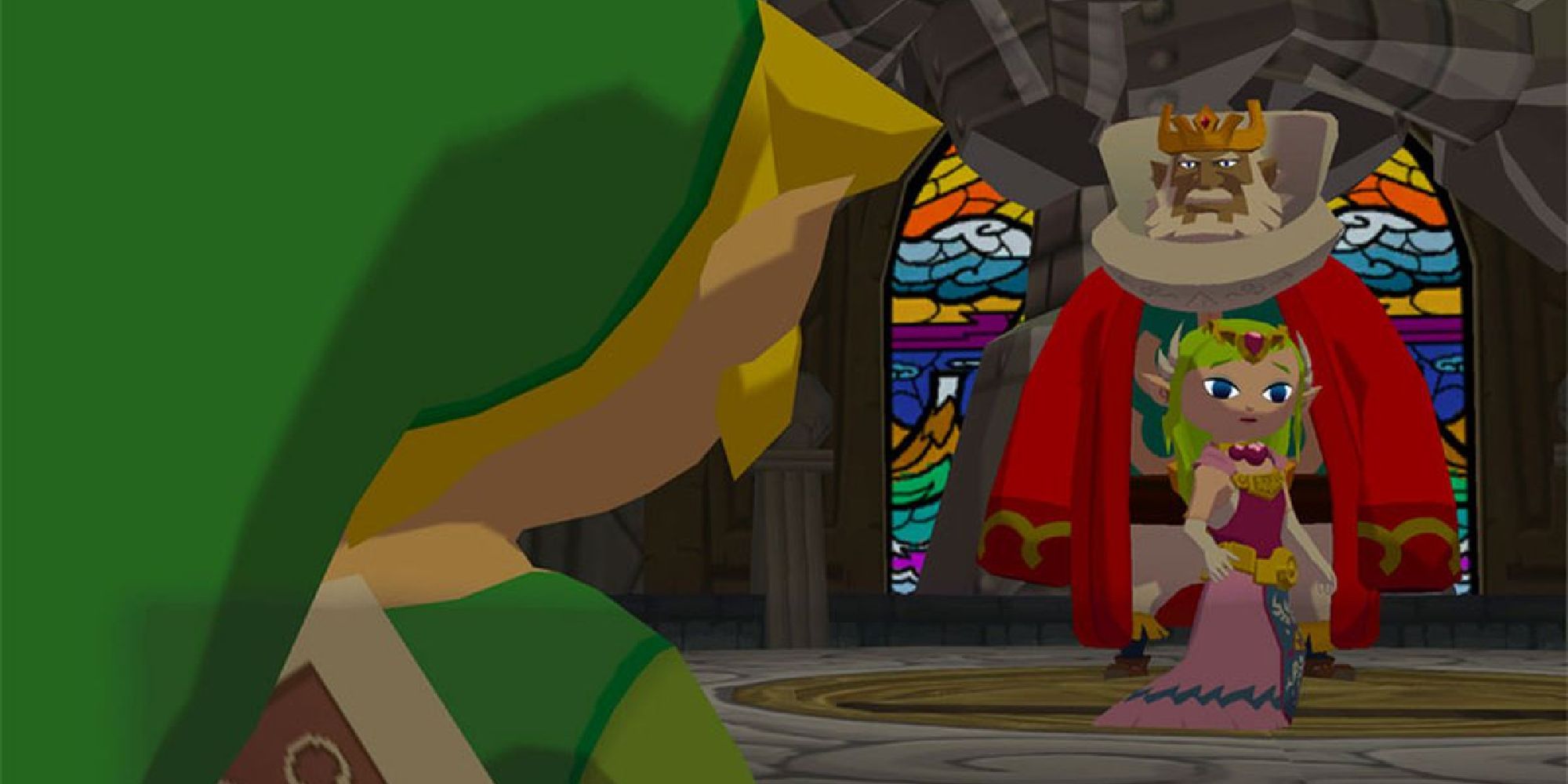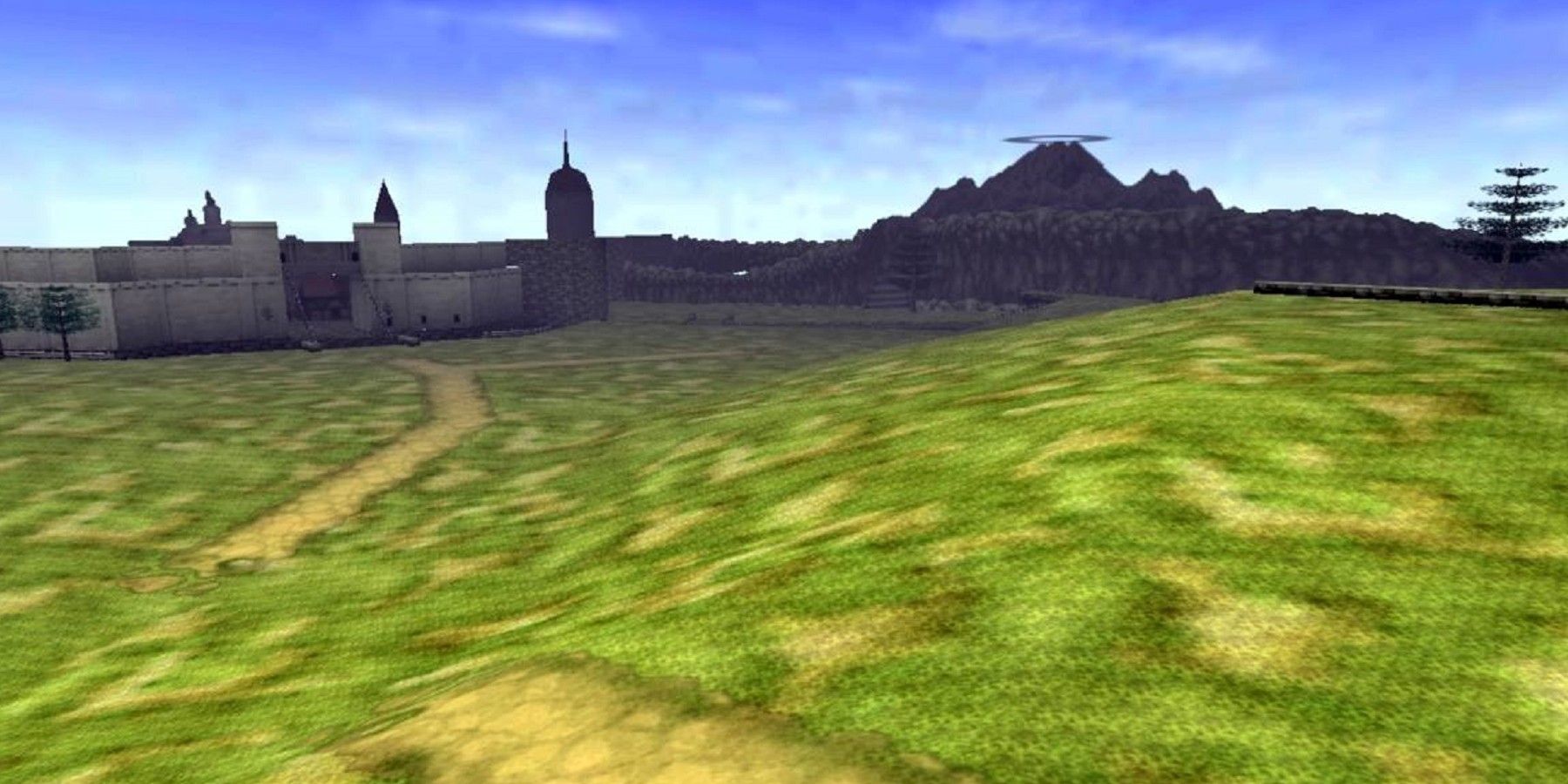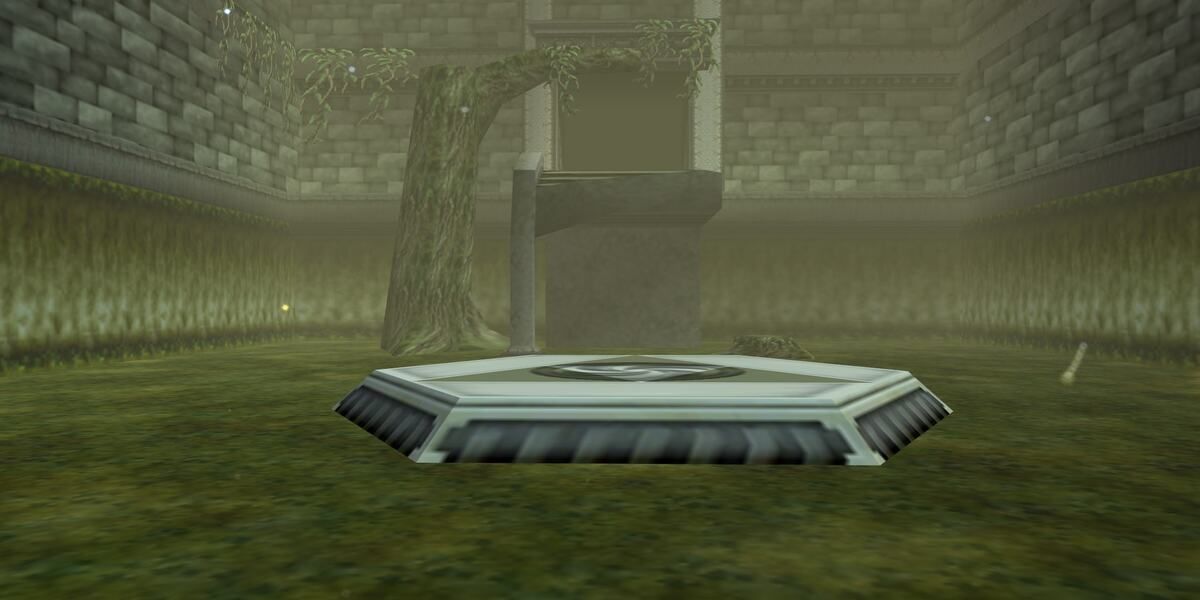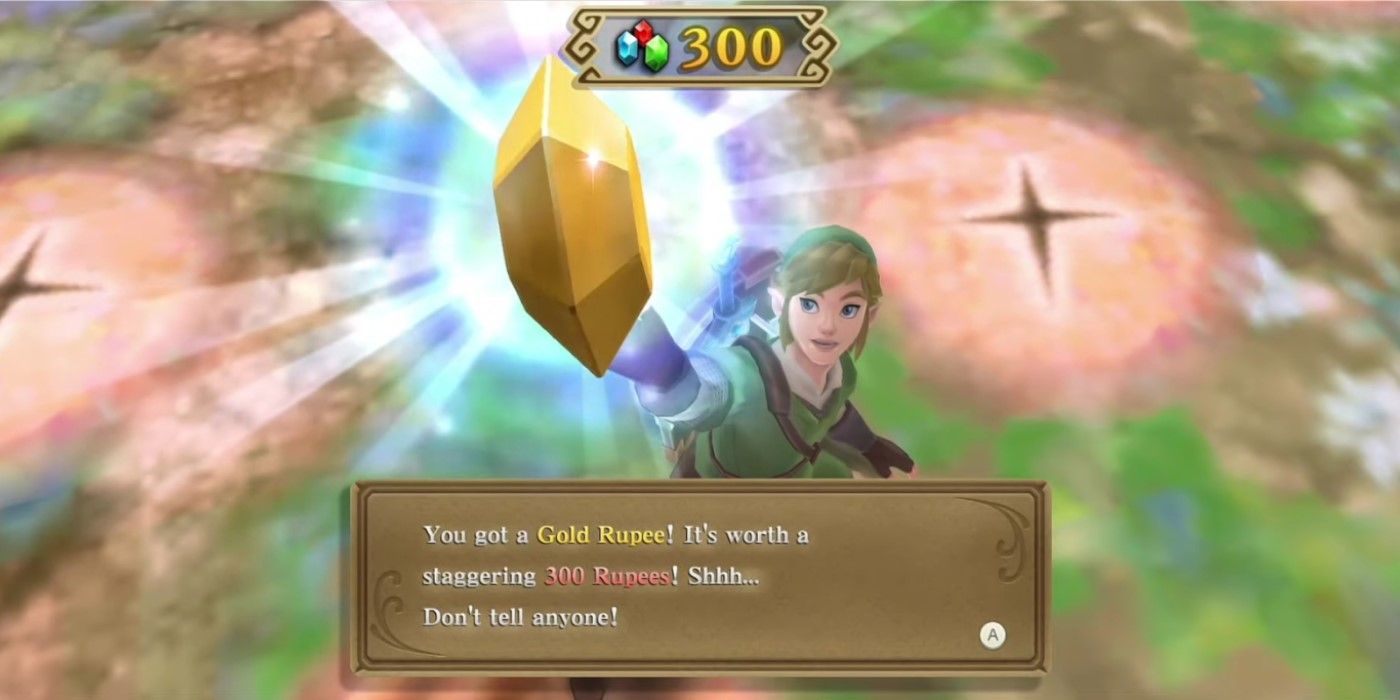Anticipation is mounting for the release of a sequel to 2017's Breath of the Wild, and fans are excited to see where the next entry in the esteemed The Legend of Zelda franchise will go. Since its beginnings in 1986, Link's quests through Hyrule and beyond have wielded some of the most enjoyable puzzles, settings, and characters in the medium. Not every entry is created equal though, and Nintendo has often opted to take new approaches, be it the motion controls of Skyward Sword or the cel-shaded art style and swashbuckling journey in The Wind Waker.
While it took an interesting new direction with Breath of the Wild, The Legend of Zelda has developed a handful of mainstay elements that fans expect and love. Zelda always seems to be in a state of flux, yet there are always components that remind players it is a Zelda title with hours of enjoyment and frustration at the series' many puzzles.
The Legend of Zelda's Kooky Characters
Perhaps the most obvious mainstay in the franchise is a handful of returning characters. From Link with his iconic green tunic to the majesty of Princess Zelda, some personalities are essential for any Legend of Zelda project. There have been games that forgo the inclusion of certain expected characters, like Link's Awakening in 1993, but there is typically enough familiarity through level design, worldbuilding, and memorable music to make up for the omission. Characters in The Legend of Zelda are very important, and titles like Death's Door and Tunic suffer for lack of iconic figures to help them truly stand out.
Zelda, Link, and Ganon are all presented in a new way every game, alongside other common appearances like Tingle, and the series does well to keep them fresh. Princess Zelda is far from the regal monarch that many know her to be when she's introduced as Tetra in The Wind Waker, and the same could be said for Ganon's Calamity form in Breath of the Wild. The characters in The Legend of Zelda are defined enough to be familiar, but the nature of the franchise makes them open to manipulation.
Hyrule and the Triforce
As with the characters in The Legend of Zelda, Hyrule hasn't featured in every mainline installment, but remains as synonymous with the series as green hats, rupees, and annoying water levels. It's a setting that has changed drastically as time has advanced, but the quasi-fantasy kingdom protected by the light of the Triforce has always been at the heart of The Legend of Zelda's charm. Uncovering its secrets and searching for resources to help Link on his journey is part of the fun. New areas like Eventide Island are added with each game, and as such not every version of Hyrule is created equal, but it's a land that has grown with the characters that inhabit it.
Hyrule is a setting many are familiar with, and certain locations are essential. Hyrule Castle resting at the center of the map like it does in A Link to the Past and Breath of the Wild, while Death Mountain stands tall in the north-east is what players have come to expect. Hyrule has become a second home from home for Zelda fans, and while the Termina of Majora's Mask and Koholint Island of Link's Awakening are charming in their own ways, Hyrule will always be central to The Legend of Zelda.
Puzzling Dungeon
As players will spend many hours in them, any great Zelda game lives or dies by its dungeons. Providing much of the challenge of the series, dungeons typically consist of multiple rooms with puzzles to be solved on the road to reaching a final chamber where the area's boss awaits. The structures are often weaved into the main story to make them feel like essential obstacles on the journey to saving the land, and they do well to satisfy fans of the slower, mentally challenging side of the franchise.
The Legend of Zelda: Breath of the Wild was criticized by many for its lackluster dungeons in comparison to other games, as the Divine Beasts were relatively simple and far shorter than the likes of Stone Tower Temple in Majora's Mask or the Forest Temple in Ocarina of Time. To make up for it there were 120 shrines to find, but while these were a welcome distraction, the absence of more elaborate dungeons was apparent.
How Much a Rupee Costs
Link may seem like the kind of character who can fashion his own weapons and upgrade, but this isn't always the case. To thrive in Hyrule it's important to be on the lookout for rupees, currency that takes the form of gems in a range of colors. Green is the most common, but rupees can also be blue, red, purple, silver, and gold, each increasing in rarity and value. Rupees can be farmed to make the quest easier, and players will often use them to upgrade their wallet, purchase items, and acquire new armor and materials.
Rupees give players an excuse to search the land and undertake side quests that offer them as a reward. Exploration has always been important to The Legend of Zelda, and the pursuit of rupees has more than just a monetary benefit. They've been a mainstay of the franchise since the very beginning, and any Zelda game without them would be missing an essential feature.
The Legend of Zelda: Breath of the Wild 2 is scheduled to release in early 2023 for Nintendo Switch.

